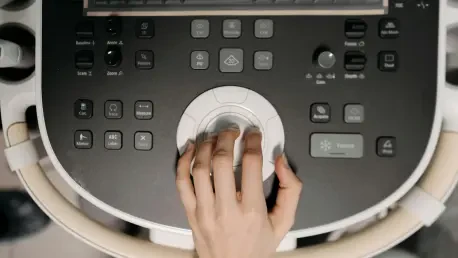What happens when life-saving devices become life-threatening? In a world increasingly reliant on technology for medical breakthroughs, this is becoming a pressing question. A recent study revealed that cyber threats targeting medical devices have surged alarmingly, putting millions of patients at risk. Picture a scenario where a healthcare provider finds that a critical device, crucial for patient care, harbors a dangerous vulnerability. Such instances underscore the necessity of evolving our approach to medical device security.
The Critical Intersection of Technology and Healthcare
The integration of advanced software-powered devices has revolutionized modern healthcare, promising improved diagnostics, treatment, and patient outcomes. Devices such as MRI machines and CT scanners bring invaluable benefits, transforming patient care through precision and efficiency. However, these advancements are not without challenges. The very features that make these machines so essential also render them susceptible to cyber threats. A compromise in their security can lead to dire implications for patient safety and undermine the integrity of healthcare delivery systems.
A New Paradigm: Transitioning to Proactive Security
Traditional security methods, predominantly reactive, often fall short against the backdrop of a dynamic threat landscape. Reactive responses, like patching vulnerabilities post-detection, are inefficient due to the rapid pace at which cyber attacks occur. In this context, an evolution towards proactive security is imperative. Proactive security involves anticipating potential threats and mitigating them before they materialize. This approach, unlike its reactive counterpart, seeks to address vulnerabilities at their root, thus minimizing the chances of exploitation.
One key strategy in adopting this proactive stance is the implementation of Software Bills of Materials (SBOMs). An SBOM provides detailed transparency regarding the software components used in devices, enabling manufacturers and healthcare providers to identify and respond to vulnerabilities promptly. Additionally, advanced protective technologies, such as runtime exploit prevention, offer significant protection by eliminating entire classes of vulnerabilities, thereby reducing dependency on quick fixes.
Insights and Experiences from the Field
Cybersecurity experts unanimously agree on the necessity of proactive security measures. Notable voices in the industry, including officials from the FDA, emphasize the importance of keeping pace with evolving compliance standards. Since 2016, compliance requirements have become progressively rigorous, encouraging stakeholders to adopt a Total Product Lifecycle (TPLC) approach. This approach integrates comprehensive security practices from design through post-release, offering a robust framework for managing device safety throughout its lifecycle.
Healthcare providers, too, have shared their experiences. Those who have encountered cyber threats firsthand understand the profound impact even a minor security lapse can have. Through anecdotes, it becomes clear that reliance solely on reactive strategies leads to unfavorable outcomes, highlighting the urgent need for proactive solutions.
Strategic Pathways to Safeguard Future Technology
Implementing effective security measures requires a deliberate strategy. For medical devices, integrating SBOMs throughout their lifecycle is crucial. By leveraging these materials, stakeholders can maintain dynamic awareness of potential vulnerabilities and prioritize necessary actions. Furthermore, deploying advanced protection technologies can strengthen device resilience, preemptively safeguarding against threats.
Crucially, collaboration between healthcare providers and manufacturers plays an essential role in maintaining up-to-date security practices. Joint efforts ensure that devices remain secure not only upon release but also throughout their operational use. Comprehensive post-release vigilance, combined with proactive security, bolsters the overall integrity of medical devices.
Toward a Secure Tomorrow
As the realm of medical devices continues to evolve, so must our approach to their security. The proactive strategies outlined are vital in ensuring the safety and effectiveness of these critical tools. By anticipating threats and enhancing technological defenses, the industry can successfully shift the narrative from vulnerability to resilience. The protection of patients should remain the paramount concern, guiding future innovations and strategies. Moving forward, embracing proactive security measures stands as a fundamental step toward safeguarding technological marvels designed to save lives.









